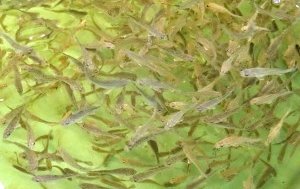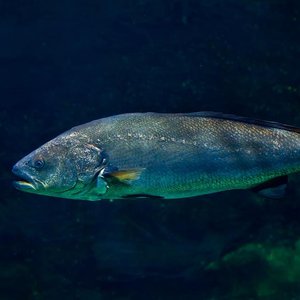The utilization of seafood processing waste (SPW) is a potential means of reducing aquaculture’s reliance on marine forage fish. Therefore, in an effort to recycle valuable nutrients such as high-quality proteins and polyunsaturated fatty acids from potentially wasted seafood processing, a team of international researchers evaluated a novel approach to enrich plant-derived feedstuffs and tested them in red drum (Sciaenops ocellatus).
Four thermally-processed blends were manufactured by dry-extruding a mixture of either soybean meal (SBM) or distillers dried grains with solubles (DDGS) with two different ratios of SPW (60:40, and 40:60 of SPW). Five diets were formulated to contain 36% of crude protein and 12% of lipid, and each of the four blends comprising treatments (SBM 60:40, SBM 40:60, DDGS 60:40, DDGS 40:60) which contributed 30% of the dietary crude protein, with SBM providing 45% and fishmeal providing the remaining 25%. The reference diet had its protein provided solely by fishmeal.
Groups of 30 fish (∼98.8 g/fish) were fed the experimental diets in triplicate to apparent satiation twice a day for eight weeks. At the end of the trial, four fish per tank had their intestine samples collected and flash frozen to measure digestive enzymes activities. The remaining fish were pooled per treatment, re-distributed into two tanks per treatment, and fed the experimental diets for an additional week. A transport-induced stress challenge was then performed and blood hematocrit, and plasma cortisol, lactate and osmolality, were measured.
Weight gain was significantly affected by the dietary treatments, with fish fed all blends but the SBM 40:60 outperforming those fed the reference diet. Fish fed all treatments also were significantly different from those fed the reference diet for hepatosomatic index. Dietary treatments also significantly impacted, relative to the reference diet, the activity of trypsin, alkaline phosphatase, and amylase. A lower percentage of red blood cells were observed for fish fed SBM 60:40 when compared to those fed the reference diet, but only before the transport-induced stress challenge.
“Based on the results of this study, the inclusion of both SPW blends had a favorable influence on the production performance of red drum and did not negatively affect most of the physiological markers while reducing processing wastes and diminishing aquaculture’s reliance on fishmeal and fish oil in the diet formulation,” researchers concluded.
Check out the study here.













